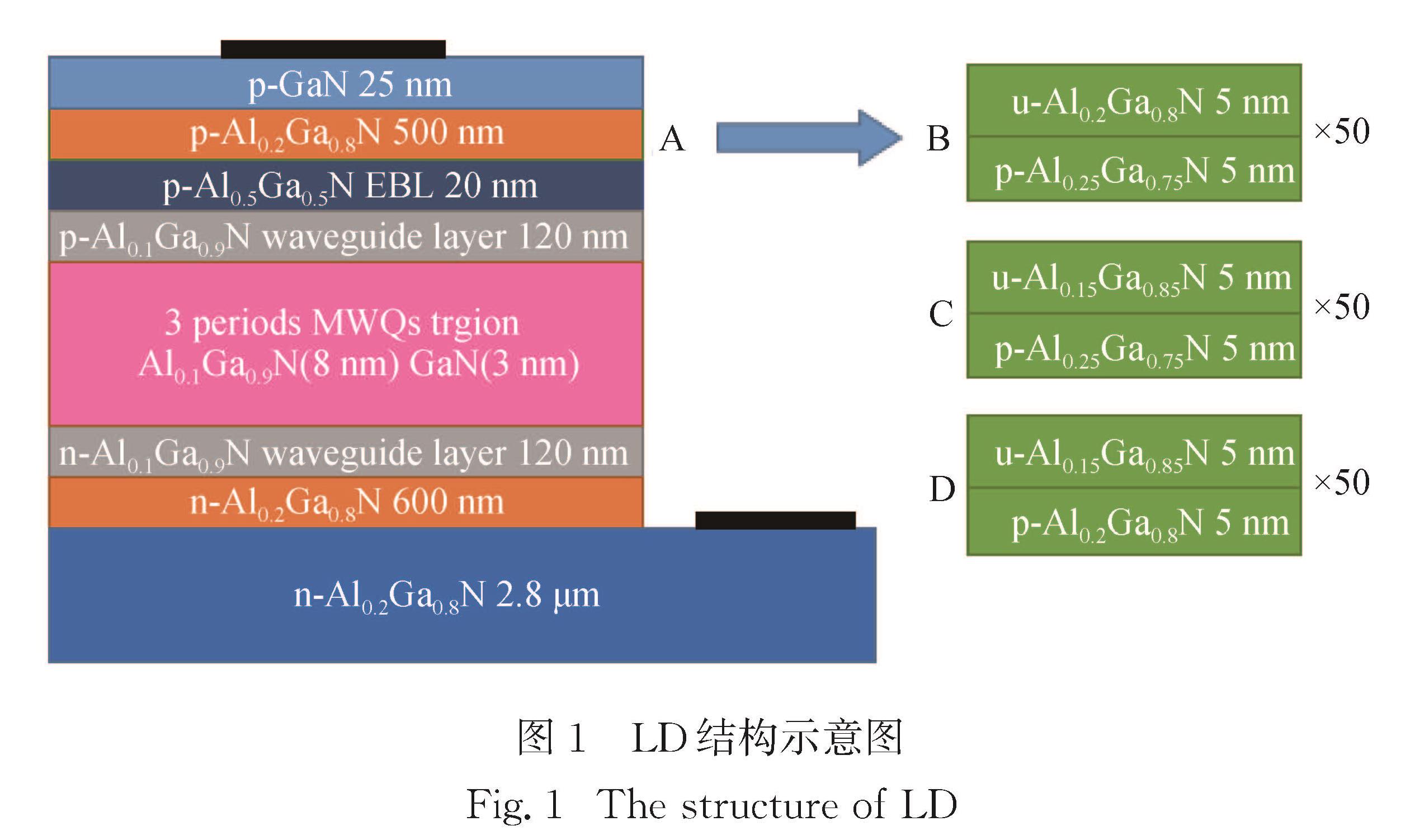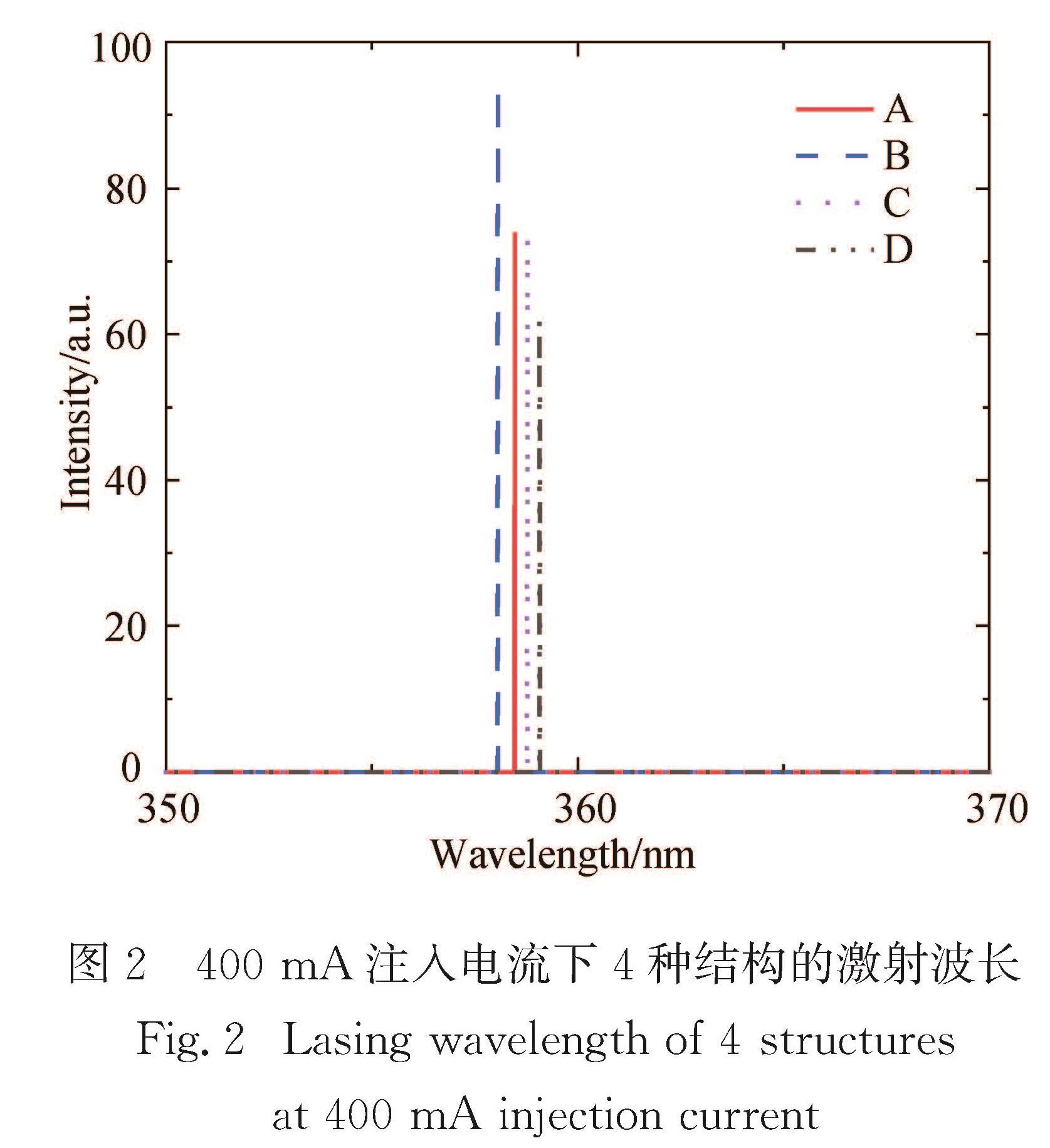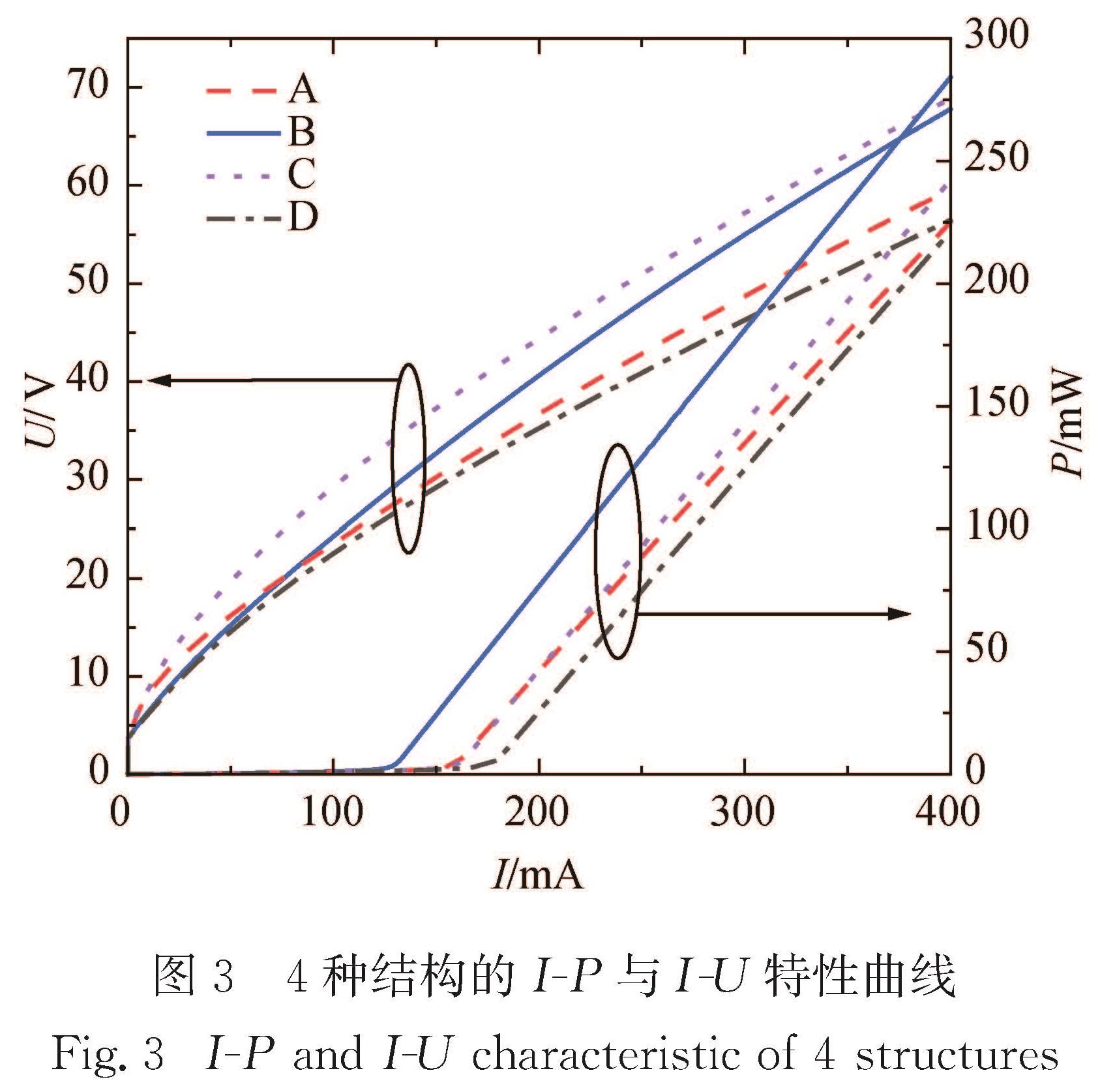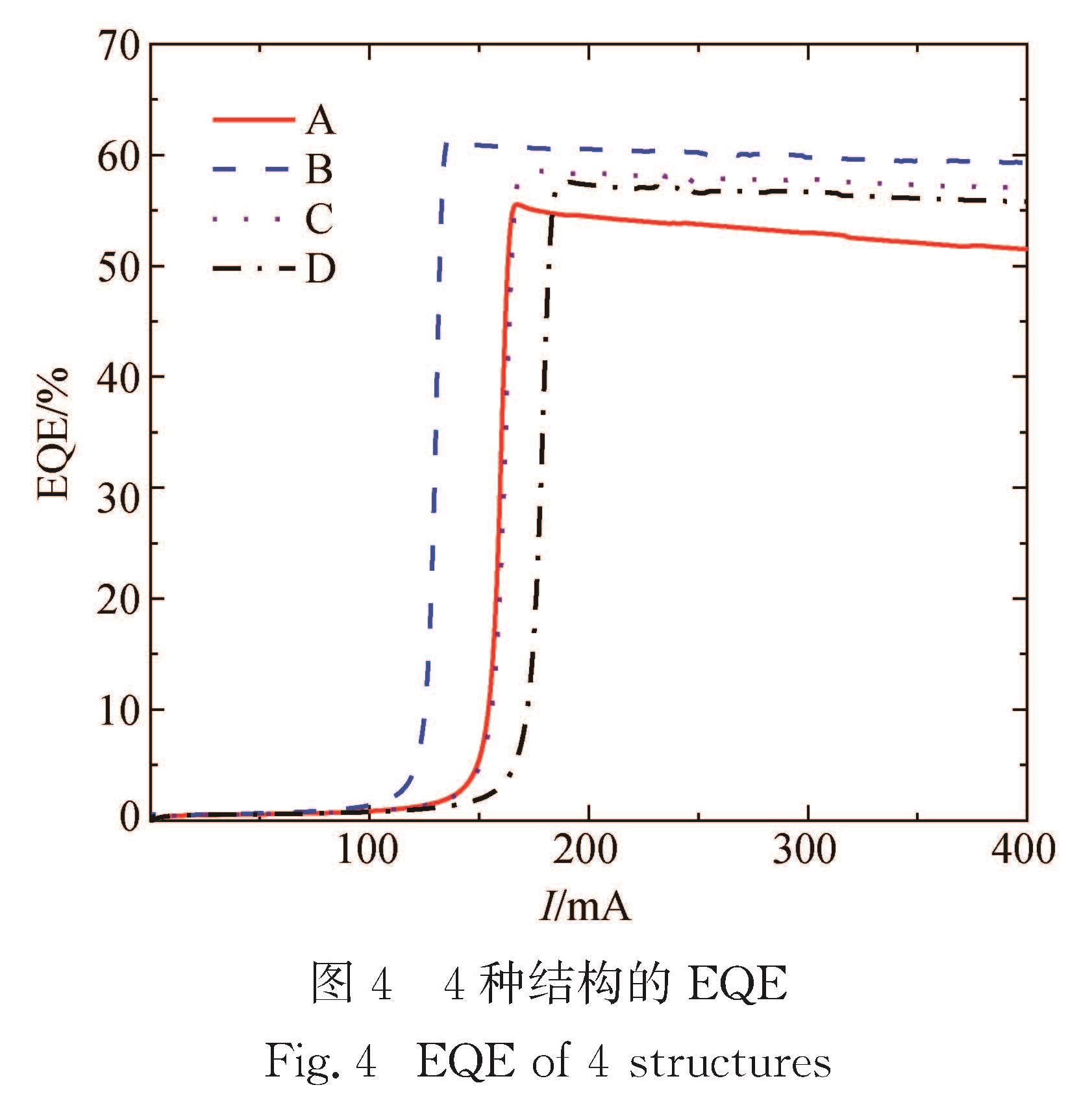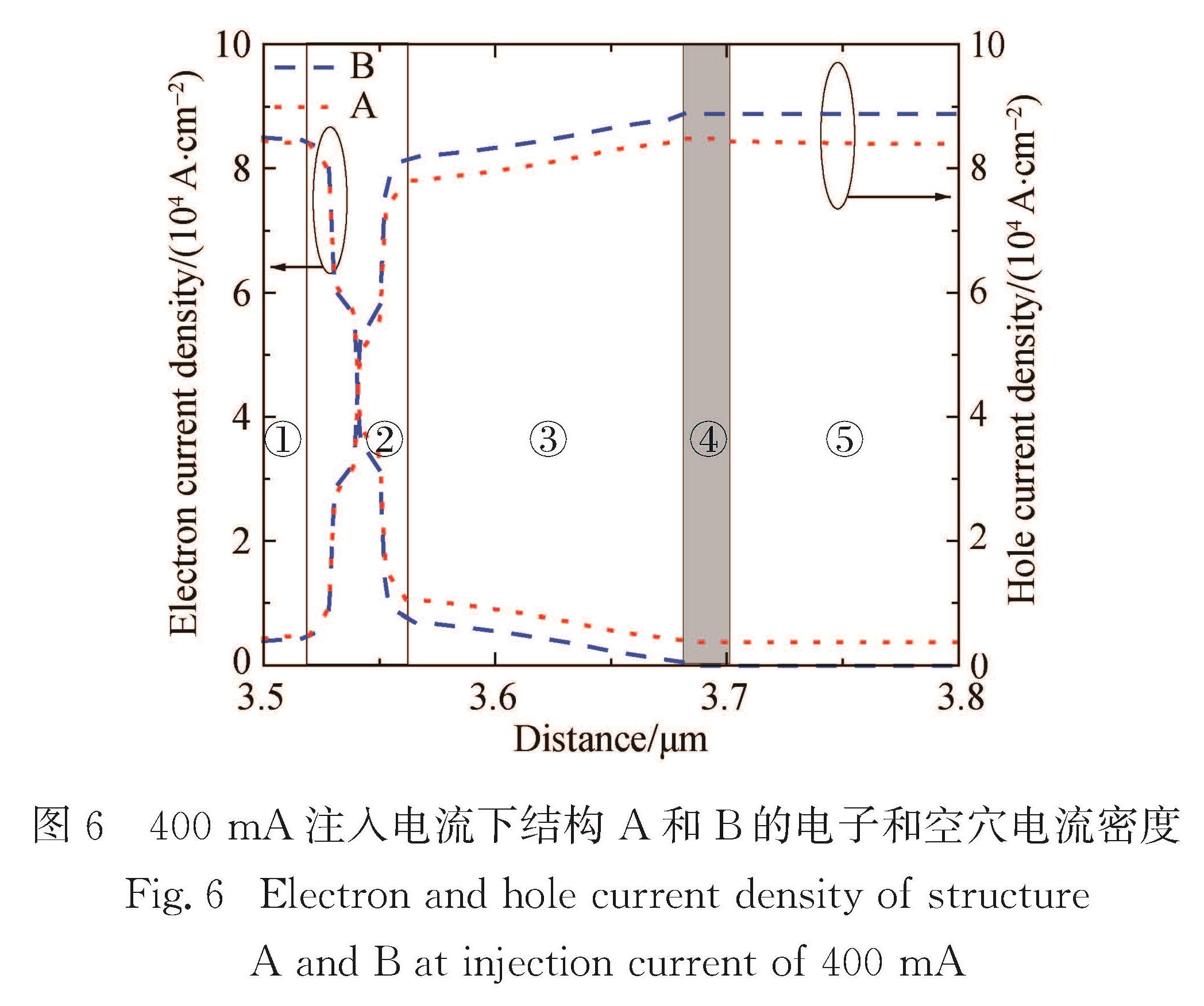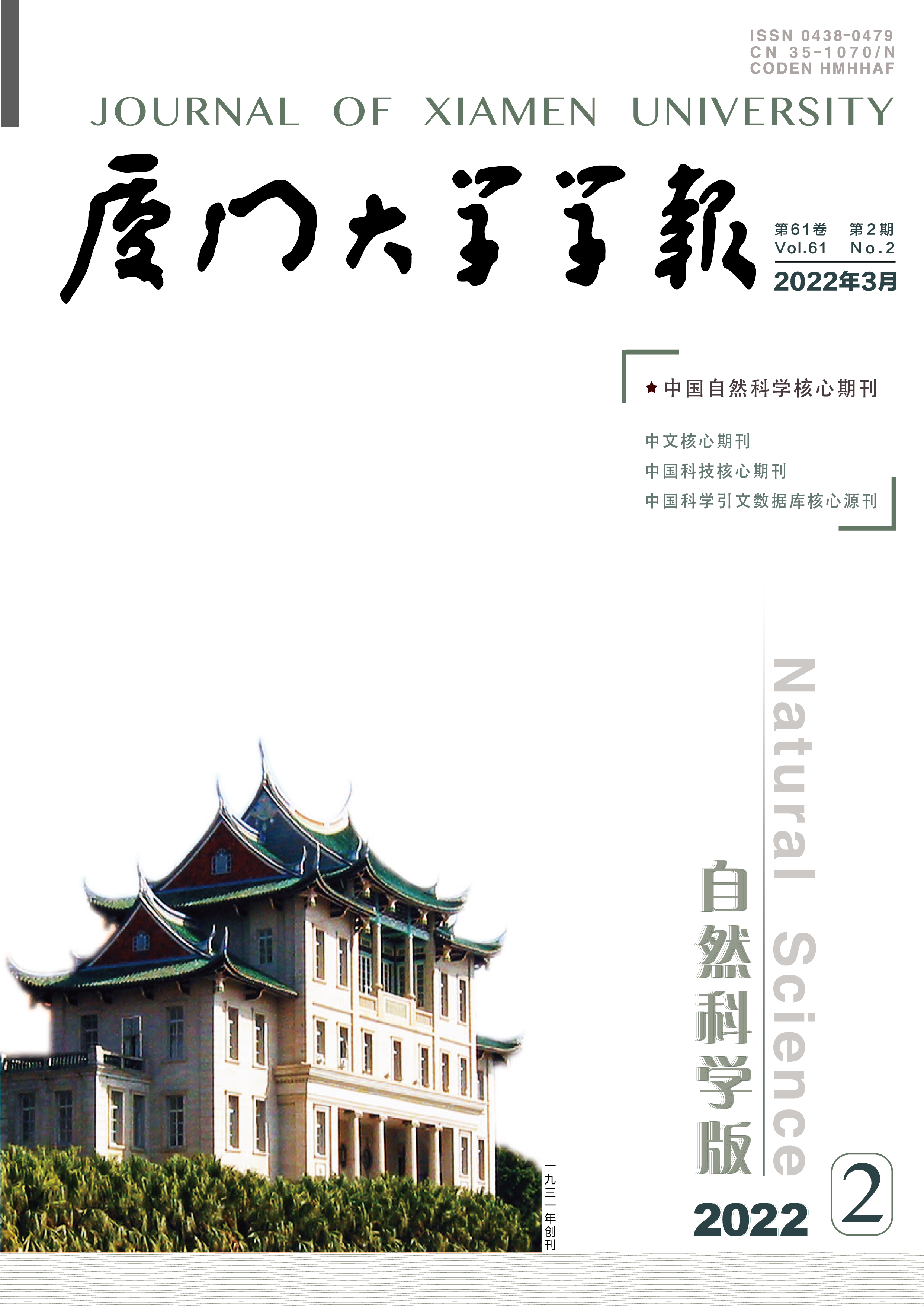AlGaN基紫外激光器(LD)已被广泛应用于生物、化学等领域,但目前还存在着诸如自发极化效应强烈、载流子注入效率低等问题,因此对于该类型LD的研究和改良十分重要.本文参考相关文献实验样品结构,采用PICS3D仿真软件,对不同结构的AlGaN基电注入边发射紫外LD进行仿真计算,在实验样品基础上提出了具有更加优异光电性能的超晶格p型层激光器结构,并通过比较能带结构、辐射复合率、电流分布等性质,进一步分析了激光器性能提升的机制.最终得到的优化后的紫外激光器具有更高的光输出功率、载流子注入、受激辐射复合率,更低的阈值电流、串联电阻、电子泄露等,实现了紫外激光器的性能提升.
Objectives: Semiconductor ultraviolet laser diodes (UV-LDs) have been widely used in biology and chemistry, while their performance is deeply impaired by strong spontaneous polarization effects and poor carrier injection efficiency among others, especially in short wavelength regions. Therefore, improvements are called for. On the other hand, super-lattice plays a considerable role in adjusting the piezoelectric effect and the polarization effect and has been extensively used in semiconductor optoelectronic devices such as light emitted diodes.
s:Methods : The finite element method software PICS3D, whose theoretical basis includes the drift-diffusion model (derived from Poisson equation, equation of current density, and the continuity equation), quantum well model, and optical waveguide model among others, has been used to simulate AlGaN-based electric-pumped edge emitting UV-LDs. Different super-lattice p-type cladding-layers structure LDs are built with PICS3D, and their performance and characteristics are computed.
s:Results : In the simulation, four samples are listed, including a conventional AlGaN based bulk material sample and three samples with different Al-composition super-lattice p-type cladding layers. Among these three super-lattice samples, an excellent one is built by replacing the conventional 500 mm bulk p-type Al0.2Ga0.8N with p-type super-lattice cladding layers consisting of 50 groups of epitaxial layers (5 nm Al0.25Ga0.75N and 5 nm undoped Al0.2Ga0.8N). The wavelength has barely changed. Both the conventional sample and the excellent new sample approach 358.5 nm, because there is no alteration in the quantum well region. However, super-lattice LDs show the threshold current of 134 mA, namely 16.3% lower than the conventional bulk structure LDs’, and show the light output power of 284 mW under the injection current of 400 mA, namely 18.5% higher than the conventional LDs’. The external quantum efficiency (EQE) of the unique structure LDs is 61.4%, while the conventional LDs’ EQE is 55.5%. Energy band diagrams are drawn, and LDs with super-lattice conspicuously display an extremely smooth transition between the p-type cladding layers and the electron blocking layer (EBL), providing enormous advantages for hole injection, due to the adjustment effect of the super-lattice structure. The band of the conventional LDs exhibits sharp bend between the p-type layer and the EBL. In addition, new structure LDs secured higher effective potential heights to prevent electrons to pass through the EBL, which is 498 meV, and the conventional LDs’ effective potential heights is 399 meV. This trend means that the electron leakage in the new structure has been suppressed. Correspondingly, the carrier current density diagram and the radiation recombination diagram certainly show that the new structure LDs are associated with higher carrier injections and lower leakages, and the stimulated radiation recombination in the new LDs is surely much more intensive than the conventional LDs, nearly improved 25%.(所有的过去式改成了现在时)
s:Conclusions: In summary, the conventional p-type cladding layer of AlGaN based UV-LDs has been replaced with super-lattice p-type doping layers. Performances and characteristics of LDs with new and conventional structures are numerically investigated by using the finite element method software PICS3D. Threshold current, output light power, quantum efficiency, band diagrams, carrier current density, and recombination rates are analyzed. Results show that the proposed structure outperforms the conventional counterpart in these aspects. As well known, the epitaxial-layer growth technique of super-lattice is maturing, and super-lattice has been widely used in semiconductor optoelectronic devices to improve the performance. Although an optimized super-lattice structure is proposed in this study, two remaining super-lattices behave less satisfactorily and one of them has even lowered the performance. This finding can offer experimentalists the guidance that not all super-lattices are useful.
